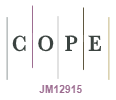What do we know about alcohol mixed with energy drink (AmED) use in Australia? Expanding local evidence
Amy Pennay A B * , Amy Peacock C D , Nicolas Droste B , Peter Miller B , Raimondo Bruno D , Phillip Wadds E , Stephen Tomsen F and Daniel Lubman G HA
B
C
D
E
F
G
H
Abstract
Objectives: Despite continued health concerns associated with the practice of consuming alcohol mixed with energy drinks (AmED), few Australian studies have examined the popularity of this combination or attempted to characterise AmED consumers. The purpose of this paper is to replicate two previously used survey approaches to consolidate a national picture of AmED consumption in Australia.
Methods: The survey approaches used were: an online survey with a convenience sample of New South Wales (NSW), Australia, residents (n = 1931; 63.7% female; median age 23.0 years); and street intercept surveys in regional and metropolitan entertainment precincts in NSW (n = 1265; 58.2% male; median age 21.0 years). Analyses explored the rates and frequency of AmED use across both samples, and the sociodemographic and substance use predictors of AmED consumption in the past 12 months.
Results: More than 90% of participants in both samples reported alcohol consumption in the past 12 months, with approximately 40% of current drinkers also reporting AmED use in the past 12 months. Three-quarters of participants interviewed in entertainment precincts reported alcohol consumption in the previous 12 hours, with one in six of these also reporting AmED consumption in the past 12 hours. AmED users across both samples were more likely than alcohol-only consumers to be younger and male, and to report riskier substance use practices.
Conclusions: Health promotion activities are warranted to promote awareness of energy drink guidelines, and the potential harms of exceeding these guidelines, among alcohol consumers. In addition, health workers should consider enquiring about AmED use as an indicator of risk related to substance use.


